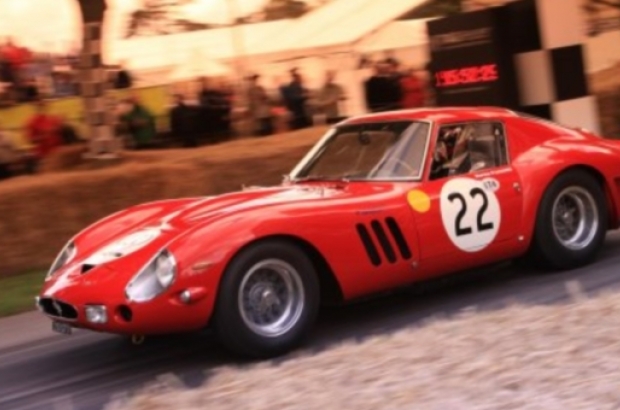- Daily & Weekly newsletters
- Buy & download The Bulletin
- Comment on our articles
When old is gold: investing in vintage cars
The prices of vintage cars are going through the roof. As currencies collapse, as property and modern art stagnate, the vintage car market is experiencing a boom. So it’s a good niche to invest in – but how? The market can be frustratingly mysterious to the uninitiated.
Not all ancient cars make good investments. Twelve years ago, the Jaguar E-Type, the Ferrari 250 GTE and the Porsche 911 Classic were worth a fraction of their current price. The price increase for these models is a steady one, unlike the sudden explosion of prices in the late 80s, which collapsed like soufflés as fast as they had risen. It does, therefore, sound tempting to buy a vintage vehicle.
But that doesn’t mean all cars are guaranteed to rise in value. Attractive as they are, Renault 4CVs and Triumph Herald Coupes have values that are stable or, at best, slightly increasing, but nothing like the price boom of the 1960s Porsche 911.
What are the criteria that influence the rating of a car?
Rarity: It’s not rocket science: what is rare is expensive. This is a basic application of the law of supply and demand. Take the Fiat Dino Spider, for example: a nondescript crest, maybe, but a Ferrari engine, an attractive design and – crucially – less than 2,000 models were ever made. The result is obvious, with prices beyond €50,000.
Sex appeal: This may seem obvious, but it is always good to remember: it pays to be beautiful. And while there’s no accounting for taste, there are always clear trends. The Jaguar E-type, that icon of beauty, slowly but surely reached dizzy heights, value-wise – and its appearance is certainly partly responsible for this. However, tastes change and while an MGB may have seemed outdated back in 1974, today it is precisely the sort of vehicle that is in demand.
Performance: Again, it seems obvious. The better the performance, the higher the price. Take the highly desirable Alfa Bertone range: more horsepower means more money (with the exception of the 1750 GTV, which is not the most powerful, but has a sturdy character; an important – and quite decisive – concept).
Pedigree: Whether your car previously belonged to an unknown sardines expert or to Elvis Presley will obviously change its value – but to what extent? This is very difficult to say, given that it’s an emotional factor and not measurable.
State: The price will vary significantly between a rust-ridden wreck and a dashing, lovingly restored collectible. But beware, the eventual value does not always reflect the time, effort and money invested: you can easily lose money when restoring a car. Besides, a vehicle sold ‘as is’ will often be worth more than one that has been hastily repaired. Case in point: the recent sales of Bugattis labelled “fresh out of a barn and certified authentic”.
Upgrades: Today it is fashionable. Often, the owner intends to use his collectible cars like modern ones. To do this, he makes a series of technical improvements to the old-timer: five-speed gearbox, power steering, disc brakes, air conditioning, radio. It could help a Jaguar XK 120 (often regarded as something of a truck) pass for a nimble ballerina. As for the influence on the price, it can go both ways; it is for the buyer to decide.
Brand: Take Ferrari – who doesn’t knows the automotive legend? Top brands always remain at the top. In the 1950s, Enzo Ferrari brought out a new brand, Asa, offering smaller coupés. These are rare, true, but they are sold among very niche markets due to a lack of public recognition. Evidence that, as noble as the pedigree can be, if the model is unknown to the public, the price won’t take off. Conversely, the great legends (Mini, VW Beetle, Citroen 2CV...) will always have their followers, resulting in consistent prices.
Age: An ‘ancestor’ is defined as any vehicle over 25 years old. A ‘young-timer’ is typically between 15 and 25 years old. Due to the interest in all things retro, these are experiencing a boom. Sold at relatively affordable prices, their values increase slowly, only to explode as they approach the age of 25, and the lower insurance premiums. If you forgo the usual – unaffordable – suspects (Ferrari F40, McLaren F1, Porsche 959 ...), there are some classics within most price ranges: Peugeot 205 GTI, BMW 323i, Mercedes 190 2.5 16V. Worth taking a peek.
Maintenance is everything
Well, that’s settled, you’ve decide to take the plunge. After carefully choosing the model and consulting an expert to be sure you’re not being sold a dud, it’s yours.
But can you keep up with it? Besides the constraints of a garage, an old-timer requires very careful (don’t rush it, especially when the engine is still cold) and conservative (braking and handling are often dubious) driving and dedicated maintenance. While this is often not very complicated, it can quickly become extremely expensive: the complete overhaul of a Ferrari or Aston Martin engine can easily exceed € 20,000. Beware the small parts that are impossible to find and, therefore, extremely expensive.



















